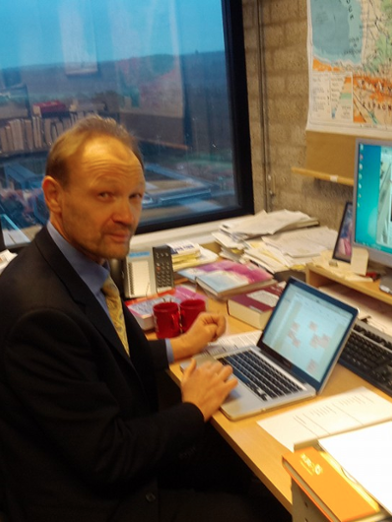
Roest 2016
“Jheronimus Bosch – Lezen en kijken” (Bert Roest) 2016
[in: Ex Tempore, 34 (2016), 2, pp. 69-83]
On the occasion of the ’s-Hertogenbosch Bosch Exhibition (2016) Bert Roest offers a survey of some dominant approaches in the literature on Bosch. Some authors want to consider Bosch a rationalist, humanist and/or pre-reformational critic of the Church and of the world around him (Tolnay, Heesen, Van Baaren). Others have claimed that Bosch’s art contains chiliastic or other deviant religious ideas (Fraenger), or alchemical-hermetical concepts (Boczkowska, Dixon). Some authors have argued that the painter invites the viewer to participate in his dream scenarios (perhaps the result of the use of drugs) and have trodden the path of free association.
Roest himself has always seen Bosch as a somewhat eccentric representative of the late medieval moralistic-religious art of painting, a view he shares with a great number of Bosch authors (Vink, Pinson, Fischer, De Vrij, Bradley, De Bruyn, Koldeweij, Vriens). Yet, the alchemical and deviant interpretations have had more influence on the non-academic image of Bosch, as is shown by a number of historical novels (Peter Dempf for example).
After a renewed inspection of the art of Bosch on the occasion of the 2016 exhibition Roest concludes that a scholar of the Middle Ages who specializes in late medieval, devotional literature can interpret most of Bosch’s important themes without too many problems. According to him, many of Bosch’s paintings can perfectly be understood if one adopts the supposed outillage mental (mental equipment) of a relatively well-educated, Christian, late medieval commoner, who painted for fellow-commoners, religious fraternities and noblemen. It is only natural to link the interpretation of Bosch’s paintings to the educational religious program that a fifteenth-century commoner and member of the Fraternity of Our Lady such as Bosch must have followed. To get more acquainted with this message we may consult the sermons of contemporary urban preachers and the vernacular devotional literature that was spread through the Low Countries by the Modern Devotion, Carthusians, and Observants from the late fourteenth century on. Bottom line: Bosch should be considered a faithful Christian moralist with a certain fancy for the grotesque.
[explicit 3rd November 2019]